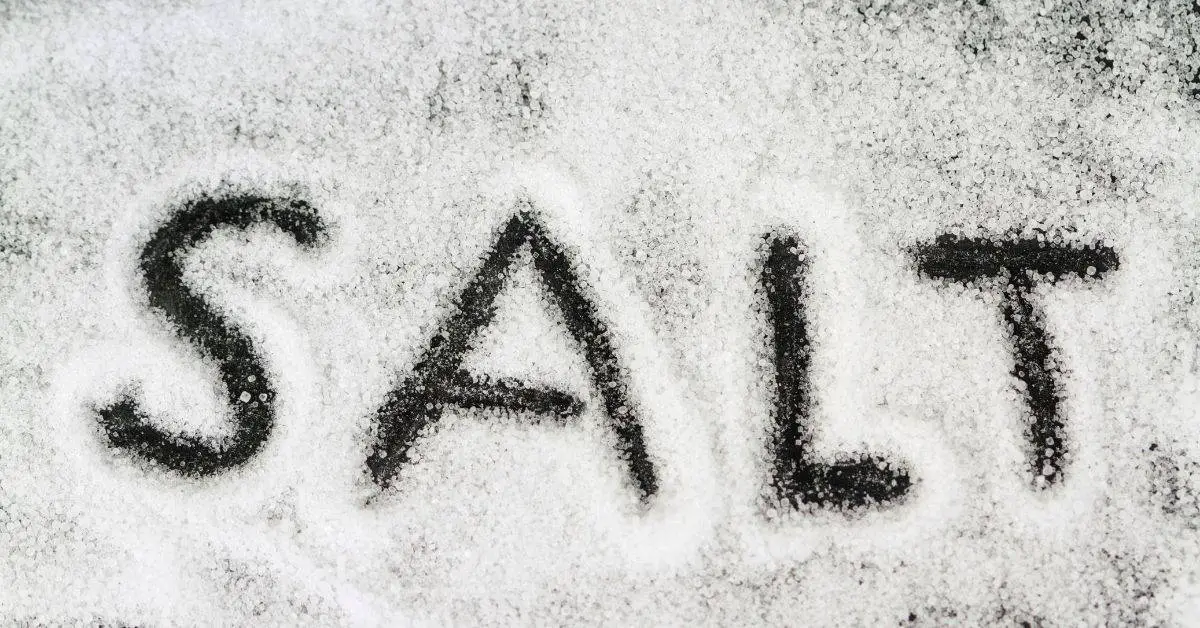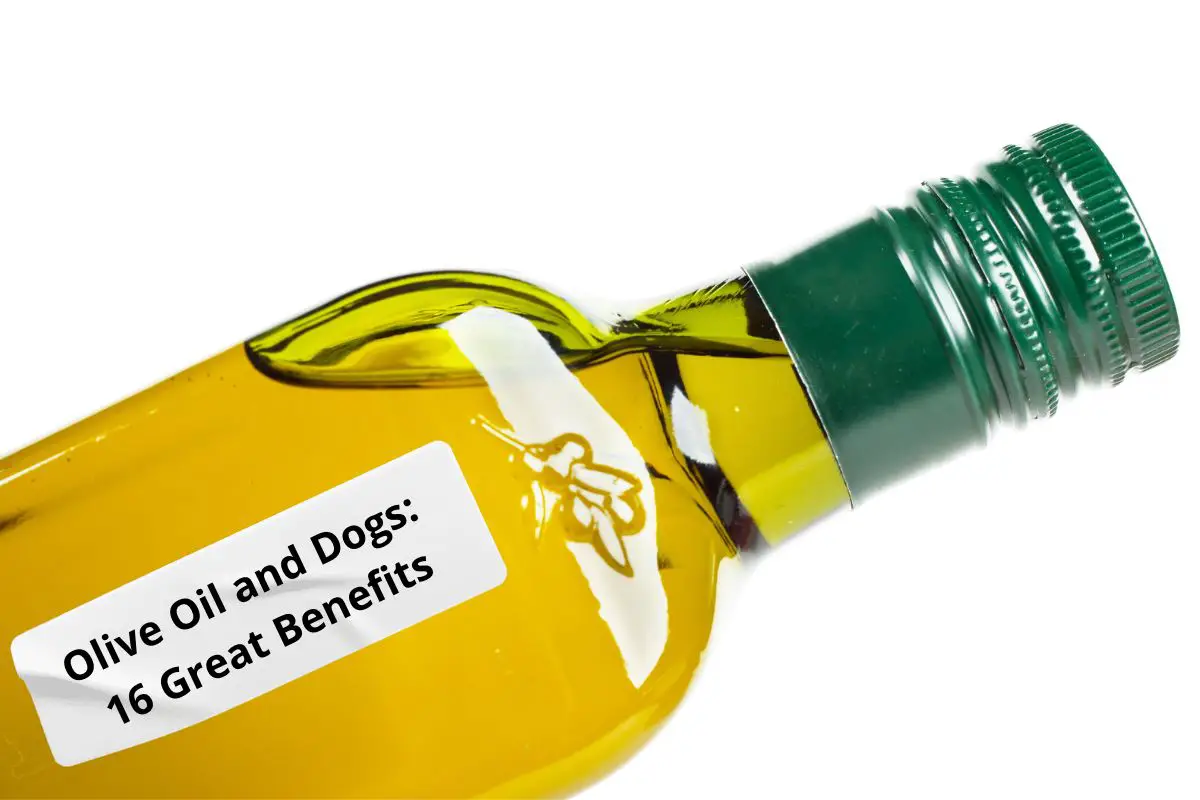This post contains affiliate links.
Salt, or sodium chloride, is a core ingredient in nutrition that plays a critical role in human health. Undoubtedly, it is one of the oldest and most popular forms of food seasoning. Nonetheless, excessive consumption of salt can lead to high blood pressure – for this reason; you are probably worried if it is safe to put salt in homemade dog food.
You should add a light sprinkle of salt to homemade dog food. The sodium ions in salt help in nerve impulse transmission and muscle contraction. Your canine also needs chloride ions to make hydrochloric acid, which aids in digestion. However, you should always watch out for salt poisoning.
The rest of this article highlights the importance of salt in your dog’s diet, the recommended quantity to add, and the signs of salt poisoning.
The Importance of Salt in Your Dog’s Diet
Absorbs and Transports Nutrients
Sodium plays a vital role in the absorption of glucose, amino acids, and water—additionally, chloride aids in the formation of hydrochloric acid (HCL). HCL forms the gastric juice necessary for absorbing many nutrients.
Regulates Blood Pressure
According to nutrition experts, Nutri-facts, sodium is the primary determinant of fluid in blood vessels. Therefore, several mechanisms regulate blood pressure and volume work by adjusting the sodium content of the blood.
For example, pressure receptors in the circulatory system detect changes in your dog’s blood pressure and transmit signals to the nervous system and glands responsible for sodium regulation.
Maintains the Right Balance of Body Fluids
Sodium ions are also critical in keeping a constant amount of water in your canine’s body cells and tissues. Notably, sodium regulates the amount of water that passes through cell membranes. Any amount of water above or below the optimal level could hurt your dog. Specifically, too much water causes cells to burst.
Contrarily, inadequate water can result in the drying out of cells, preventing life-sustaining chemical reactions from taking place. In general, your dog needs to retain a sufficient amount of sodium in the body to retain an adequate amount of water—insufficient sodium results in cellular dehydration.
Transmits Nerve Signals
Once it has been absorbed, salt separates into oppositely charged ions. This separation creates a solution that can transmit electric currents—this aids in the transmission of nerve impulses. If your dog’s paws touch a hot object, for example, the nerve cells in its skin sense the heat.
The positively charged sodium ions (Na+) in the solution get pumped into the nerves. As that happens, potassium ions get pumped out of the nerves, sending impulses to your dog’s muscles.
Aids in Muscle Contraction and Relaxation
Once your dog’s muscles receive impulses, the proteins inside muscle fibers interact with each other to shorten or relax. According to Visible Body, this happens when the membrane channels open and signal the body to initiate a 4-step process that results in contraction:
- The open channels allow sodium ions to enter the cytoplasm of muscle fibers.
- The influx of sodium ions triggers the release of calcium ions.
- The released calcium ions diffuse into the fibers.
- The relationships between the proteins inside muscle cells change, causing muscular contraction.
The 4-step process stops when your dog’s muscles no longer receive impulses. Therefore, your dog needs salt to remain alert. This video provides why your dog needs salt to survive:
How Much Salt Is Safe for Your Dog?
According to the economist Theodore Levitt, anything in excess is poisonous. This statement holds for your Mastiff. Dogs can tolerate moderate sodium chloride content in their food, albeit too much salt can cause serious health complications or death.
The Association of American Feed Control says veterinarians recommend that dog food contains at least 0.3% sodium for a balanced meal.
That’s 0.25g – 1.5g of salt per 100g of food. These amounts are likely to be safe for your four-legged companion and will enable your canine to reap the benefits salt provides. However, you should consult your veterinarian if your dog is on medication or has the following medical conditions:
- Kidney Disease. Does your dog have an impaired kidney? If yes, avoid giving it any salt at all! If you must do so, ensure it is under strict vet supervision.
- Heart Disease. Excessive intake of salt strains the heart and increases your dog’s blood pressure. This could deteriorate your Mastiff’s health condition.
- Liver Disease. Sodium can cause further liver damage by causing a buildup of fluid in your pet’s abdomen.
Signs of Salt Poisoning in Dogs
According to Wag, a prominent platform for dog walkers, excessive salt intake can cause salt toxicity, water deprivation, or hypernatremia. Salt poisoning can be life-threatening to dogs.
You should always watch out for the following signs of salt toxicity:
- Excessive thirst
- Excessive urination
- Walking drunk
- Diarrhea
- Lethargy
- Tremors
- Seizures
- Brain swelling (cerebral edema)
You can watch this YouTube video from First Aid for Life on the common signs of salt poisoning in dogs:
Salt poisoning can cause death if untreated. On average, it costs $5,000 to treat salt poisoning in dogs. The treatment includes administering intravenous fluids, monitoring electrolyte balance, and the treatment for cerebral edema and dehydration.
How To Treat Salt Poisoning in Dogs
According to the MSD Veterinary Manual, there is no specific treatment for salt poisoning.
However, you can prevent further poisoning by:
- Not feeding your dog any food with high sodium content.
- Providing fresh drinking water to your dog. This should be in small amounts and at frequent intervals. Notably, the intake should be 0.5% of body weight every hour for several days.
- Give your dog water through a stomach tube if the poisoning is severe. However, this should be under the strict supervision of a vet.
- Using an emetic if your dog has ingested a lot of salt but has not shown any clinical signs.
Besides, you should be proactive by keeping all foods with excess salt content out of reach of your pets. You should also lock any rock salt in your home in a cupboard.
It is important that you immediately call your vet if your Mastiff experiences salt poisoning. As a subject matter expert, they may recommend the most appropriate treatment depending on your dog’s health and the extent of poisoning.
Additional Tips
- Be mindful about substances. Ensure your guests understand the potential hazards of salt to dogs to reduce the possibility of poisoning by visitors. Often, visitors carry edible gifts such as crisps. Your dog may sniff such packaged gifts and cram down the snacks. This can lead to salt toxicity due to the high sodium content in crisps.
- Always use original containers to store salt or uncooked pet food. These containers should be labeled and covered with pet-proof lids. Original containers often contain the amount of sodium and chloride per gram. Use this information to determine whether it is safe to add more salt to your dog’s food.
- Besides table salt poisoning, look out for rock salt poisoning.
Instead of using rock salt to melt ice during winter, I recommend the Paw Safe Ice Melter from Amazon. The product is salt-free and safe on your eyes and skin. Besides, it is non-toxic, non-corrosive, and has a long shelf life.
Conclusion
Salt is essential for maintaining life-sustaining body functions. Its sodium component plays a vital role in muscle contraction, nerve impulses, the absorption and transportation of nutrients, and regulating blood pressure.
However, avoid giving your dog salt if it has heart, kidney, or liver diseases. Also, watch out for the signs of salt poisoning. You should avoid feeding your dog excess sodium if you suspect salt toxicity. Additionally, keep any substances with high sodium content in safe places. Finally, call the vet immediately if your Mastiff experiences salt toxicity.
Related Articles
- Is Spam Good for Dogs? Should You Feed It to Your Pooch?
- Putting Bacon Grease on Dog Food: Pros and Cons of Doing So
Sources
- Healthy paws: Can Dogs Eat Salt?
- Iams: The Importance of Sodium in Your Dog’s Diet
- Wag: Salt Poisoning in Dogs
- Tails: Dog Food Myth Busters – Is Salt Bad for Dogs?
- Cuteness: How Much Salt Is Unhealthy for Dogs?
- University of Hawaii at Manoa: Weird Science: Salt is Essential to Life
- ChemicalSafetyFacts: Sodium Chloride
- Oregon State University: Sodium (Chloride)
- Visible Body: Muscle Contractions: How Neurotransmitters and Chemical Reactions Move Muscles and Bones
- Topdogtips: Using Salt in Homemade Dog Food Meals
- MSD Veterinary Manual: Overview of Salt Toxicity
- Scientific American: Why Do We Put Salt on Icy Sidewalks in The Winter?
- The University of Arizona: The Chemistry of Amino Acids
- ScienceDirect: Sodium Ion
- Britannica: Pressure Receptor
- Centers for Disease Control and Prevention: High Blood Pressure Symptoms and Causes
- Wikipedia: Salt Poisoning
- Northwestern University: What is An Ion?
- ChemicalSafetyFacts: Hydrochloric Acid
- NCBI: The Phylogeny and Biological Function of Gastric Juice—Microbiological Consequences of Removing Gastric Acid
- Medical-dictionary: Dehydration
Mrdogfood.com is a participant in the Amazon Services LLC Associates Program, an affiliate advertising program designed to provide a means for sites to earn advertising fees by advertising and linking to Amazon.com. We also participate in other affiliate programs which compensate us for referring traffic.





